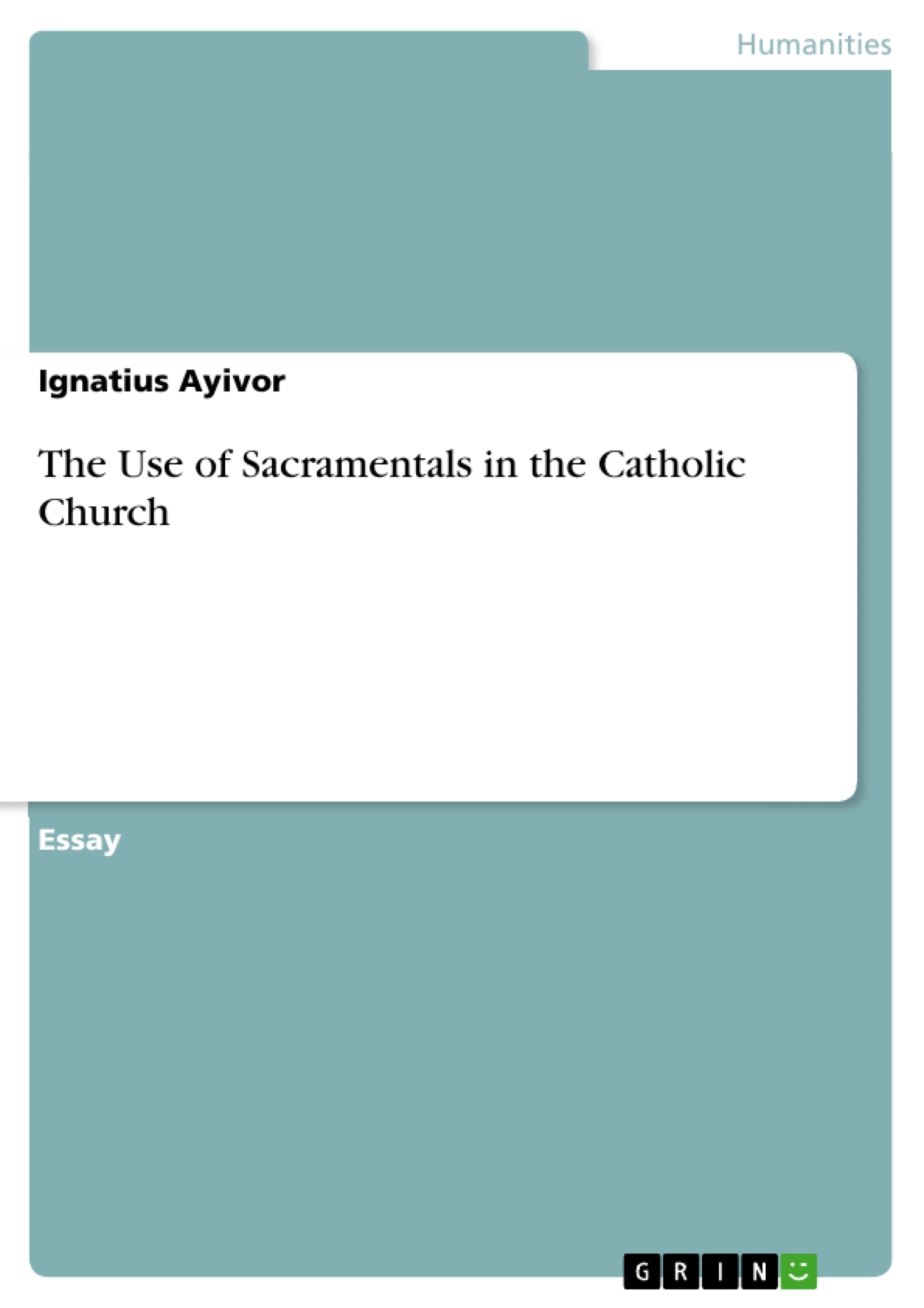This term paper deals with the use of sacramentals. The Catechism of the Catholic Church defines Sacramentals as “sacred signs which bear a resemblance to the sacraments. They signify effects, particularly of a spiritual nature, which are obtained through the intercession of the Church. By them, men are disposed to receive the chief effect of the sacraments, and various occasions in life are rendered holy.”
There are three classes of sacramentals, which are blessings, consecrations and exorcism in the strict sense. The code of canon law assigns four general canons to sacramentals and they refer to some paragraphs of the document Sacrosanctum Concilium. The document specifies their nature and purpose; their relationship with the Paschal mystery; their pastoral value; and the need to reform them as well as the criteria to carry out such reforms.
The sacramentals are certain blessed items that are spiritually beneficial to the faithful for example Holy Water, Medal, Rosary, Scapular, Blessed Salt, Crucifixes, Candles, Blessings, etc. According to Sacrosanctum Concilium, the sacramentals are sacred signs which have a sacrament-like structures. They have been created by the Church to produce spiritual and material fruits; and their efficacy originates from the intercession of the Church.
Table of Contents
- What are sacramentals?
- The difference between sacramentals and sacraments
- Biblical references to sacramentals
- Who can establish sacramentals?
- Types of sacramentals
- Consecration of persons
- Dedication of places things
- Blessings
- Exorcism
- The ministers of sacramentals in the catholic church.
- Can lay people be ministers of the sacramentals?
- References
Objectives and Key Themes
This text aims to provide a comprehensive explanation of sacramentals in the Catholic Church. It explores the nature and purpose of sacramentals, their relationship to sacraments, and the various types of sacramentals practiced in the Church.
- The nature and purpose of sacramentals
- The distinction between sacramentals and sacraments
- The scriptural basis for sacramentals
- The various types of sacramentals
- The role of the Church in administering sacramentals
Chapter Summaries
The first chapter defines sacramentals and their role in the Catholic Church. It elaborates on the nature of these sacred signs and their spiritual effects, distinguishing them from sacraments.
The second chapter discusses the difference between sacramentals and sacraments, highlighting their shared and distinct characteristics. It examines the concept of ex opera operato and ex opera operantis in relation to both categories.
The third chapter explores biblical references to sacramentals, presenting examples from the Old and New Testaments that demonstrate the use of sacred signs and actions for spiritual purposes.
Keywords
Key terms and concepts explored in this text include sacramentals, sacraments, sacred signs, spiritual effects, ex opera operato, ex opera operantis, blessings, consecrations, exorcism, biblical references, Catholic Church, and Church hierarchy.
- Quote paper
- Ignatius Ayivor (Author), 2017, The Use of Sacramentals in the Catholic Church, Munich, GRIN Verlag, https://www.grin.com/document/384404




